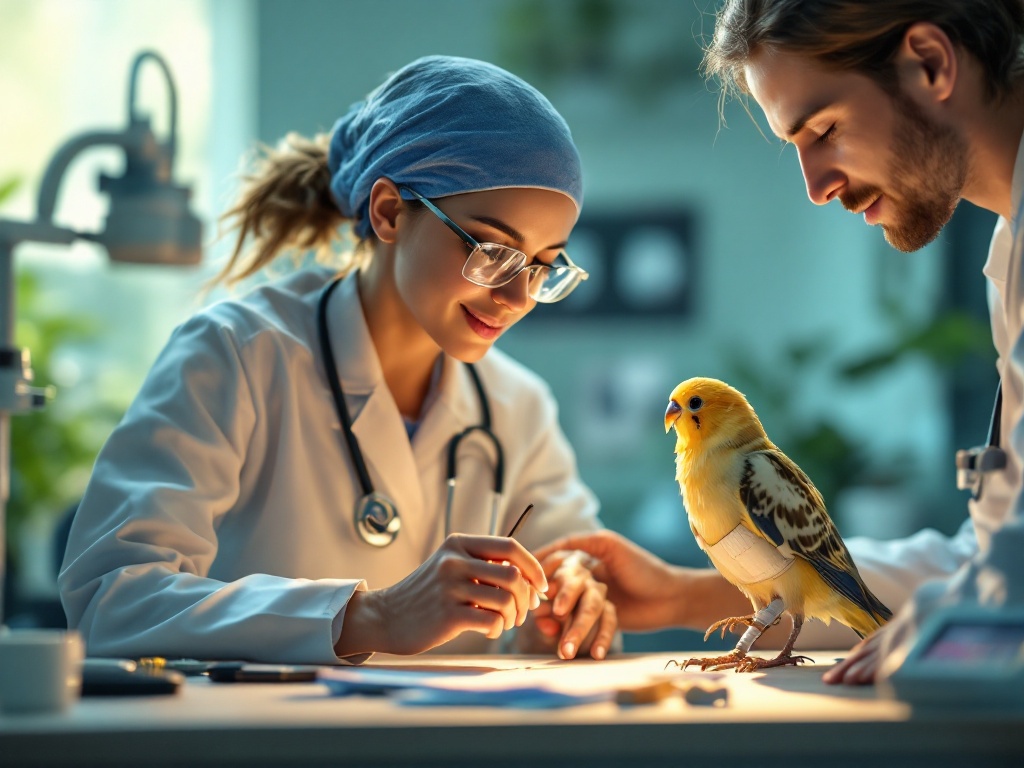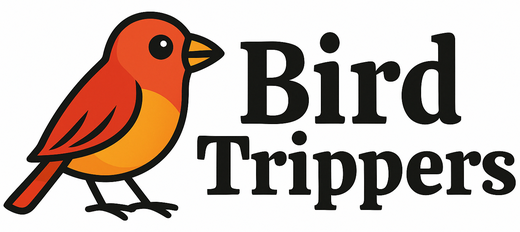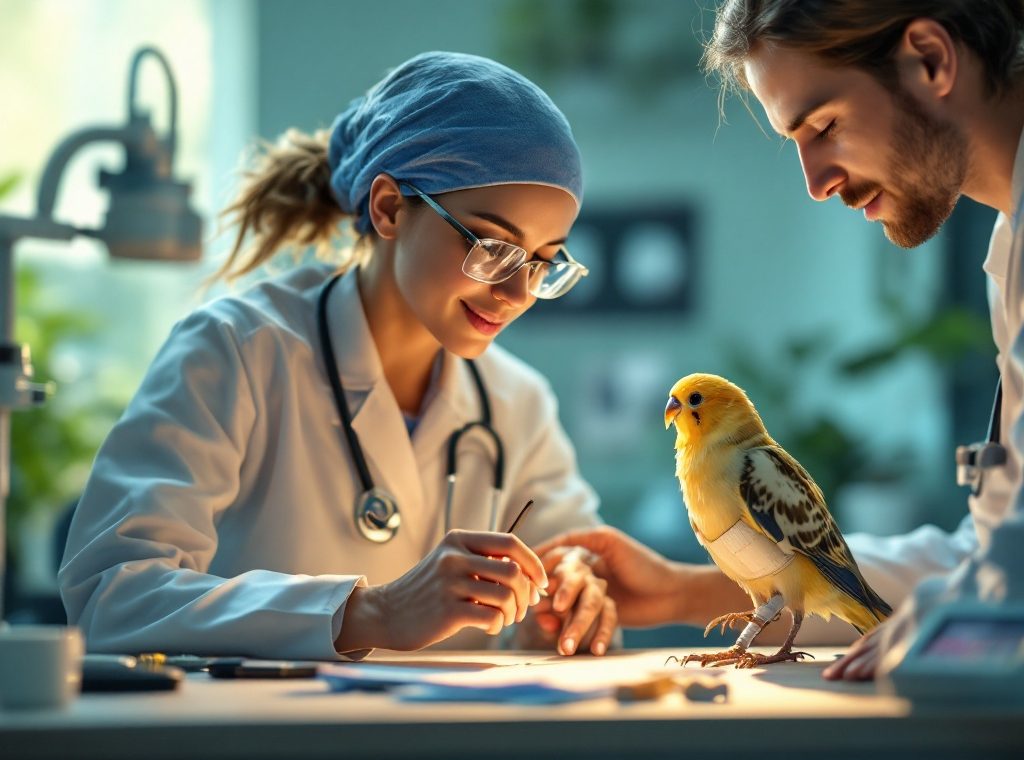Veterinary Help: How Much Does it Cost to Fix a Bird’s Broken Leg
Avian accidents happen, and a broken leg can be a costly emergency. Treatment for your feathered friend can range from $300 to over $8,000 depending on the severity of the break and necessary procedures like x-rays, splinting, or even complex surgery. Learn how to recognize a broken leg, understand treatment options, and discover how avian insurance can help safeguard against unexpected veterinary bills. Fly into our comprehensive guide to ensure your bird gets the best possible care without breaking the bank.
Important information

- The cost to fix a bird’s broken leg varies greatly, from $300 to $1,000 for basic treatment and potentially up to $8,000 for complex surgical cases.
- Key factors affecting cost include break severity, diagnostics (X-rays around $75), treatment type (splinting at about $100 or surgery from $500 upwards), vet expertise, and location.
- Post-treatment care like pain medication (meloxicam $20-$30, butorphanol $15-$25 per dose) and rehabilitation are essential for full recovery and add to the total expense.
- Pet insurance can significantly offset these costs, with some policies covering up to £3,500 in expenses for necessary treatments like a broken leg.
- For any bird injury, immediate veterinary attention is crucial for proper assessment, pain management, and treatment, which improves recovery chances.
Understanding the Cost of Fixing a Bird’s Broken Leg
The cost of fixing a bird’s broken leg depends on several factors. These include the severity of the break, necessary diagnostic tests (like x-rays), and the chosen treatment options. Treatment can range from simple splinting to complex surgery. Post-treatment care, medication, and rehabilitation also contribute to the overall expense. Your location and the avian vet’s expertise can also influence the final cost.
Typical Expenses
- Initial exam: around $65.
- X-rays: usually about $75.
- Splinting: approximately $100.
Surgical Repair Costs
Surgical repair costs are more variable.
- Basic procedures: starting around $500.
- Complex cases: potentially reaching $8,000.
Remember to factor in additional expenses for medications and follow-up visits.
What Factors Influence the Cost?
Several factors influence the cost of repairing a broken leg in a bird. Veterinary expertise and location play significant roles, as do the specific services required. Fracture complexity matters, with more complex breaks naturally costing more. Diagnostic imaging, such as X-rays, and potential surgical intervention add to the expense. The avian species and size also influence cost due to varying care requirements. Generally, owners can expect to pay between $300 and $1000 without insurance. This price is subject to change.
Factors Influencing Cost
- veterinary expertise,
- location,
- specific services required.
Additional Cost Factors
- fracture complexity,
- diagnostic imaging (X-rays),
- surgical intervention,
- avian species and size.
Estimated Costs for Veterinary Services
Treating a bird’s broken leg can be expensive. Basic veterinary care typically costs between $50 and $2,000, while surgery for complex fractures can range from $500 to $8,000. Avian medical insurance can help offset these costs, with some policies covering up to £3,500. Discuss the anticipated costs with your veterinarian before proceeding with any treatment.
Diagnostic Procedures: Exam and X-rays
Diagnosing a bird’s broken leg involves a few key steps. First, a physical exam (around $65) assesses the bird’s overall health. Next, X-rays (about $75) are crucial for pinpointing the fracture and its severity. This information guides the treatment plan, which could range from splinting a simple break to surgery for a complex fracture. X-rays can also reveal underlying issues like bone or joint problems, making them invaluable for ensuring appropriate care.
Cost of Initial Exam for Birds
A first bird checkup typically costs $65, though this can vary depending on the vet’s location and the specific services required.
Cost of X-rays and What They Reveal
Avian radiographs, commonly known as X-rays, typically cost $75. These images are essential for diagnosing injuries, revealing broken bones, dislocations, and the severity of damage, such as that from a fall. This information guides the veterinarian in determining the appropriate treatment, which could range from a simple splint to more complex surgical intervention.
Treatment Options for a Bird’s Broken Leg
A broken leg is a painful and serious injury for birds, often leading to complications if not treated quickly. Emergency veterinary care is crucial. Treatment varies depending on the break’s severity. Simple fractures can often be managed with a splint to stabilize the leg for healing. However, complex breaks may require surgery to realign the bones and minimize the risk of long-term problems. Swift action and proper veterinary attention are essential for the bird’s complete recovery. Here’s what you should do if your bird breaks its leg:
Immediately seek emergency veterinary care. This is the most crucial step to ensure your bird’s well-being.
Carefully transport your bird to the vet, minimizing movement to prevent further injury.
Follow the veterinarian’s instructions precisely, whether it involves splinting, surgery, or medication.
Emergency Medical Attention: Why It’s Crucial
For an injured bird, swift action is crucial. Emergency care stabilizes the bird and minimizes further complications, addressing pain and stopping any bleeding.
This rapid response significantly improves the chances of recovery and ensures long-term well-being.
A veterinarian’s assessment is essential to determine the appropriate treatment, which could range from medication to surgery. They will also provide guidance for ongoing care at home.
Cost and Process of Splinting
Treating a bird’s broken leg typically costs around $100. The treatment involves splinting the bone with a firm material to prevent movement and further damage while it heals. In cases of severe breaks, surgery may be required.
Understanding Surgery Costs
Avian fracture repair costs vary significantly. Simple breaks generally cost between $500 and $2,500, comparable to cancer-related fractures. However, complex surgical procedures can cost up to $8,000. The total cost depends on the severity of the fracture, the complexity of the procedure, and the bird’s specific needs.
Post-Treatment Care and Rehabilitation
Post-treatment pain management is crucial for a bird with a broken leg. Veterinarians typically prescribe medication to alleviate discomfort. Rehabilitation plays a vital role in restoring full leg function and preventing long-term complications, ultimately ensuring a complete recovery. Here’s what that process may look like:
Pain Management: Administer prescribed pain medication as directed by the veterinarian to keep the bird comfortable during the healing process.
Immobilization: Ensure the broken leg remains immobilized, often with a splint or bandage, to promote proper bone healing and prevent further injury.
Physical Therapy: Once the bone has started to heal, gentle physical therapy exercises, guided by a veterinarian, may be introduced to help restore range of motion and strengthen the leg.
Gradual Return to Activity: As the bird’s leg gains strength, gradually increase their activity level under veterinary supervision to avoid re-injury.
Monitoring: Regularly monitor the bird’s progress and consult with the veterinarian to ensure the healing process is on track and adjust the rehabilitation plan as needed.
Pain Management: Medications and Costs
Managing pain in birds often involves medications similar to those used for humans. Commonly prescribed NSAIDs include meloxicam and carprofen. For more severe pain, opioids like butorphanol may be necessary. Medication costs can vary. A small bottle of meloxicam typically ranges from $20 to $30, while butorphanol usually costs between $15 and $25 per dose. The total cost depends on the length of the bird’s treatment.
Managing Veterinary Expenses
Treating a bird’s broken leg involves various veterinary expenses. The initial examination and diagnostics, such as X-rays, contribute to the baseline cost. Treatment costs then vary depending on the complexity of the fracture and whether splinting or surgery is required. Pain management is essential and will factor into the overall expense, as will necessary follow-up care. The total cost is influenced by the severity of the break, the chosen treatment method, and your location.
Managing Veterinary Costs
- Pet insurance can offset costs by covering eligible expenses.
- Financial assistance programs offered by non-profit organizations and veterinary schools may be available.
Proactive Financial Planning
A dedicated savings account can help manage unexpected veterinary costs and prepare for your bird’s future healthcare needs.
Typical Veterinary Bills: What to Expect
Treating a bird’s broken leg can be costly, often ranging from $300 to $1,000 without insurance. This cost typically includes: the initial examination, diagnostics (such as X-rays), and procedures like splinting or surgery. Pet insurance can significantly reduce these expenses. Some plans cover a large portion of veterinary bills and may even offer wellness coverage for routine checkups.
How Medical Insurance Can Help
Safeguard your beloved bird with bird insurance, providing financial security for unexpected veterinary expenses. Comprehensive policies can cover up to £3,500 for necessary treatments, including injuries such as a broken leg. Avian accidents are unpredictable, and insurance helps manage these unforeseen costs.

















